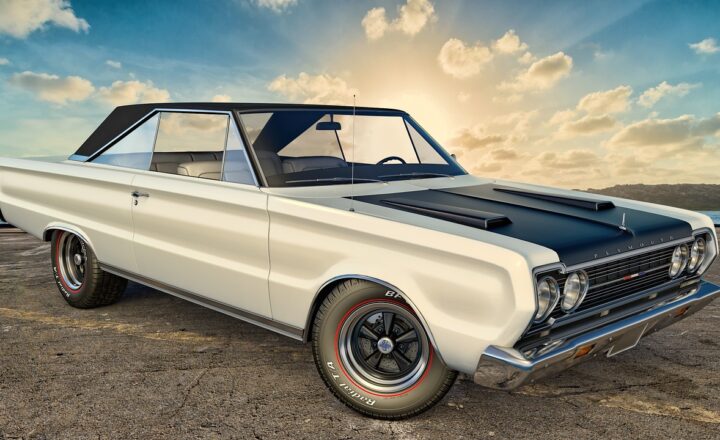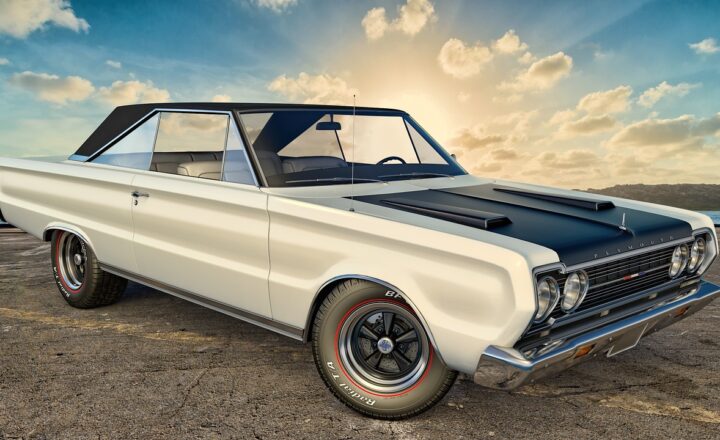10 Cars That Changed the World: Innovations That Shaped Modern Transportation
November 17, 2024

The automobile has undergone a significant transformation since its inception in the late 19th century. Cars have not only redefined personal travel but have also had profound impacts on commerce, culture, and the environment. In this article, we will explore ten cars that changed the world, highlighting the innovations they introduced and their lasting influences on modern transportation.
1. Ford Model T: The People’s Car
The Ford Model T, introduced in 1908, is often considered the car that put America on wheels. Known as the “people’s car,” it was the first automobile mass-produced on assembly lines using interchangeable parts. This groundbreaking approach significantly decreased production costs, making the vehicle affordable for the average American.
**Innovations Introduced:**
– **Mass Production:** The assembly line technique used by Henry Ford revolutionized manufacturing, allowing for faster production and a consistent quality of vehicles.
– **Affordability:** By bringing the cost down to around $300, the Model T opened car ownership to millions.
– **Social Changes:** It sparked widespread mobility, changing where people lived and worked and enabling the suburbanization of America.
2. Volkswagen Beetle: A Symbol of Freedom
The Volkswagen Beetle, known for its distinctive shape, was designed in the 1930s as an affordable car for the masses in Germany. By the 1960s, it became a symbol of the counterculture, adaptable for the open road and embraced by young drivers.
**Innovations Introduced:**
– **Streamlined Design:** Its aerodynamically efficient design contributed to lower production costs and better fuel efficiency.
– **Cultural Impact:** The Beetle’s popularity during the 1960s helped shape automotive culture, symbolizing freedom and youth rebellion.
– **Global Reach:** The Beetle’s production and popularity expanded globally, influencing small car designs around the world.
3. Chevrolet Corvette: America’s Sports Car
Since its debut in 1953, the Chevrolet Corvette has stood as a beacon of American performance engineering. Its combination of sleek style and high performance set new standards for sports cars globally.
**Innovations Introduced:**
– **Fiberglass Body:** The Corvette was the first mass-produced car to use a fiberglass body, reducing weight and improving performance.
– **Performance Engineering:** Models introduced innovations in engine technology and handling that influenced the design of sports cars worldwide.
– **Cultural Icon:** The Corvette represents the American dream of car ownership and performance.
4. Toyota Prius: The Birth of Hybrid Technology
Launched in 1997, the Toyota Prius was the world’s first mass-produced hybrid vehicle. It marked a significant step in the automotive industry’s transition toward more sustainable practices and emphasized fuel efficiency.
**Innovations Introduced:**
– **Hybrid Powertrain:** By combining an internal combustion engine with an electric motor, the Prius achieved much higher fuel efficiency than traditional gas-powered cars.
– **Sustainability Movement:** The Prius kickstarted a push for environmentally-friendly cars that has influenced many automakers to adopt hybrid and electric technologies.
– **Public Awareness:** It significantly raised awareness about climate change and the need for sustainable transportation options.
5. Tesla Model S: Redefining Electric Vehicles
The Tesla Model S, launched in 2012, revolutionized the perception of electric vehicles (EVs). It not only offered a practical alternative to gasoline cars but also proved that EVs can deliver high performance and luxury.
**Innovations Introduced:**
– **Long-Range Capabilities:** The Model S was the first electric vehicle to offer a range of over 300 miles on a single charge, addressing one of the biggest concerns surrounding EV adoption.
– **Performance Metrics:** Its impressive speed and performance redefined what consumers expect from electric cars.
– **Autonomous Driving Features:** The Model S introduced advanced technology such as Autopilot, paving the way for the development of autonomous vehicles.
6. Mini Cooper: Compact Design with Big Impact
Originally manufactured in the 1960s, the Mini Cooper is a classic example of how compact design can have a big influence on the automotive landscape. Its small size and innovative engineering made it an urban favorite.
**Innovations Introduced:**
– **Space Efficiency:** The Mini’s design maximized interior space while minimizing its physical footprint, making it perfect for urban environments.
– **Cultural Influence:** It became a symbol of 1960s British culture, impacting car design and marketing worldwide.
– **Rally Success:** The Mini’s success in motorsport showcased high performance in a compact vehicle, influencing future designs.
7. Ford F-Series: The Truck That Built America
The Ford F-Series has been the best-selling vehicle in the United States for over four decades. It’s not only a standard in the pickup truck category but has also reshaped the American work landscape.
**Innovations Introduced:**
– **Versatility:** The F-Series combined functionality with comfort, making it suitable for both work and personal use.
– **Technology Integration:** Ford continuously integrated advanced technology like safety features, performance enhancements, and fuel efficiency into its design.
– **Cultural Representation:** The F-Series has come to represent the American spirit of hard work and resilience.
8. Honda Civic: Compact with a Twist
Since its introduction in 1972, the Honda Civic has evolved into a reliable, fuel-efficient car with a strong focus on performance and design. It continues to influence compact car design choices today.
**Innovations Introduced:**
– **Fuel Efficiency:** The Civic was designed for economical driving, appealing to consumers looking to save on fuel costs during the 1970s oil crisis.
– **Sporty Alternatives:** Later models introduced sporty designs that appealed to younger buyers, broadening its market footprint.
– **Technology Innovations:** The ongoing integration of technology has kept the Civic relevant in today’s automotive landscape.
9. Mercedes-Benz S-Class: The Luxury Standard
The Mercedes-Benz S-Class has long been regarded as the benchmark for luxury sedans since its debut in 1972. It showcases the epitome of automotive luxury and innovation.
**Innovations Introduced:**
– **Luxury Features:** The S-Class is renowned for introducing advanced automotive technologies that have since become standard in luxury vehicles, including stability control and advanced safety systems.
– **Comfort Technology:** Features such as air suspension and high-end sound systems have set the standard for comfort and luxury in automobiles.
– **Performance Engineering:** The S-Class models have consistently pushed the performance envelope, blending speed with luxury.
10. Land Rover Defender: The Adventurous Icon
The Land Rover Defender emerged in 1948, built primarily for rugged terrains and off-road capabilities. It became synonymous with adventure and exploration around the globe.
**Innovations Introduced:**
– **Off-Road Capabilities:** The Defender set new benchmarks for off-road capabilities, proving that vehicles could handle extreme conditions.
– **Cultural Symbol:** Representing strength and adventure, the Defender has found its way into various cultural contexts, from safari vehicles to military use.
– **Design Legacy:** Its distinctive boxy design remains iconic, influencing the design of off-road vehicles.
Conclusion
From the Ford Model T to the Tesla Model S, each car has not only served as a mode of transportation but also played a pivotal role in shaping society and our relationship with automotive technology. These ten vehicles represent moments of innovation that have transcended their original purpose, influencing generations of drivers and paving the way for the future of mobility.
As we look ahead to an era focused on sustainability and autonomy, it’s essential to recognize the lessons learned from these automotive pioneers. The future promises to build upon these innovations, continuing the journey of revolutionizing how we perceive and use transportation.







